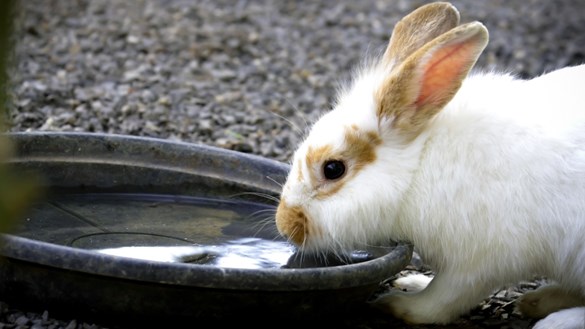Socialising Children And Cats
Owning a cat can be highly rewarding for children of all ages. Read how to successfully socialise them and create a lasting bond.
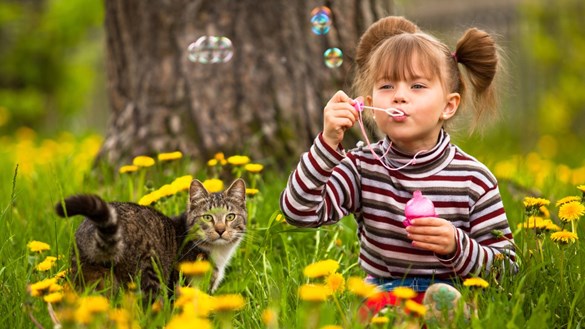
The benefits of cats for children
Cat ownership provides a host of benefits for children, from increased social skills to helping teach responsibility. In fact, a recent survey by Cats Protection found that 96% of people agreed that there were benefits to children growing up with cats.
Similarly, cats can benefit from an enthusiastic and energetic playmate to keep them active. It can also help to teach them how to act around younger members of the family.
Properly socialising your cat around children, and teaching your child how to treat their pet, is important to ensure a great relationship.
Keep reading for our advice on creating a loving and long-lasting relationship between children and cats.
Meeting each other
Introducing your cat to your child sooner rather than later will help both parties become accustomed to each other.
 Go slowly at first, remembering not to rush them into it; they may not hit it off straight away. Cats can be particularly nervous about meeting new people. Short, frequent meetings are the best way to let them get to know each other gradually.
Go slowly at first, remembering not to rush them into it; they may not hit it off straight away. Cats can be particularly nervous about meeting new people. Short, frequent meetings are the best way to let them get to know each other gradually.
The ‘sniff test’ is usually the best place to start when introducing your child and pet. Holding out you child’s hand so your cat can learn their smell is important before trying to stroke them. If your cat seems unsure after sniffing, they may not want to be touched. Instead, encourage your child to talk to them gently to soothe their nerves and wait for the cat to come to them.
If you’re adopting a new cat, involving your child in the selection and adoption process can be a great way to teach them about the responsibility that comes with it. This will also start the bonding process between them.
Teach your child to understand that there are certain times when they shouldn’t approach their cat. These include when they’re eating, when they have a toy, when they’re in their litter tray or while they’re sleeping. Extra care should be taken with blind or deaf cats, which can be easily frightened.
The arrival of a new baby can be a confusing time for cats. They may become territorial and mark their face scent glands around the house; investing in a cat pheromone diffuser can help them relax. Using treats and rewards to make positive associations with the baby can encourage your cat to accept the new arrival.
Playing together
One of the benefits of pets and children is the mutual exercise and stimulation they gain from playing together. Young children can be particularly enthusiastic and loud when playing, which can frighten cats, so it’s important that you teach them to play calmly and quietly.
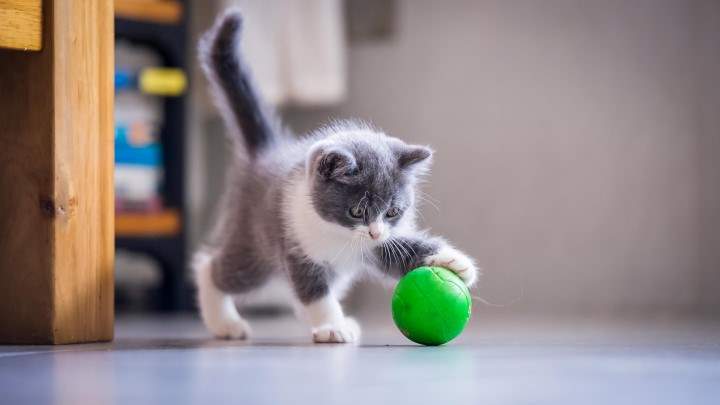 Playing together with their favourite cat toys, such as a treat ball or play mouse, forms a great bond. Make sure to teach your child how to recognise when their pet is scared or anxious (swishing tail, ruffled fur, hissing) and to back off straight away.
Playing together with their favourite cat toys, such as a treat ball or play mouse, forms a great bond. Make sure to teach your child how to recognise when their pet is scared or anxious (swishing tail, ruffled fur, hissing) and to back off straight away.
Never leave your pet and child to play unattended, particularly young children, as cats can be easily spooked. Be ready to intervene if the pet looks unhappy to prevent bites or scratches.
Pet-friendly handling
Cats require more delicate handling than dogs, so remind your child to be gentle with no sudden movements when handling their pet.
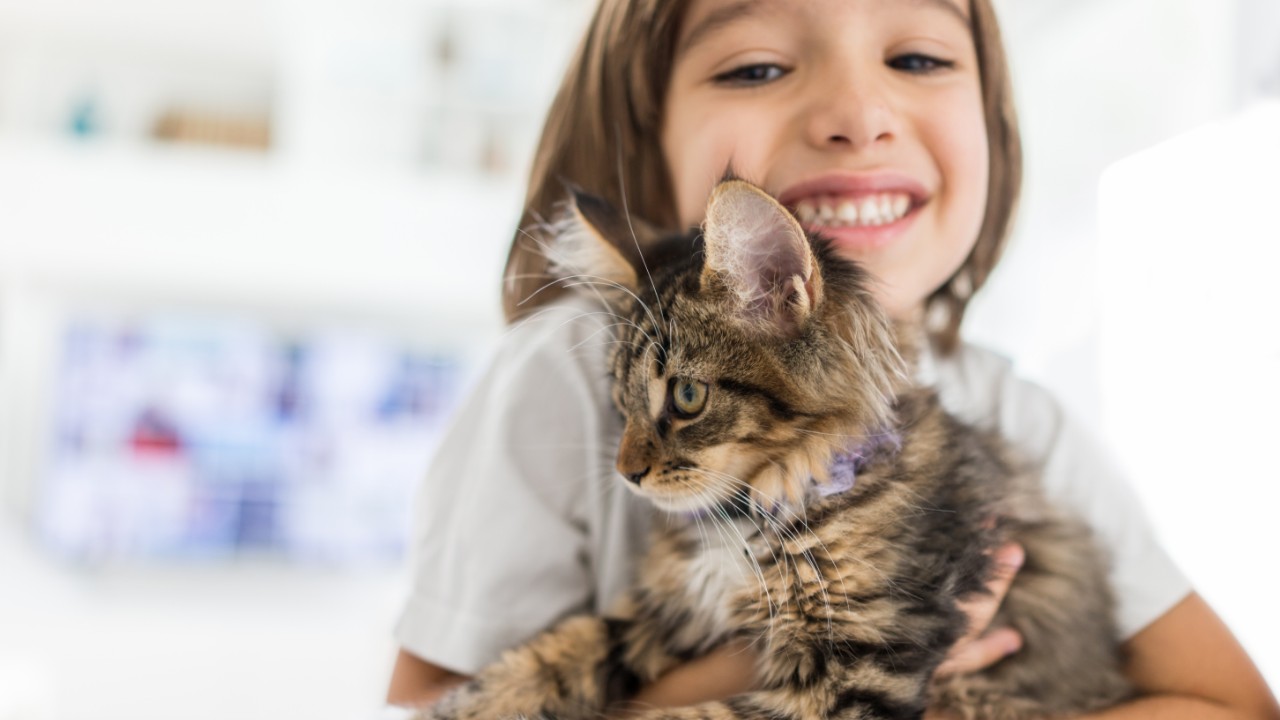
A good rule of thumb is to teach them to treat their pet as they would another child; don’t climb on them, no pulling on their ears or tail and no rough play.
Many cats don’t like to be picked up and will come to their owners in their own time. Teach your child to be patient with their pet and not to become discouraged if they don’t want to play right now.
If you or your child do need to pick up your cat, you should always practise good technique to minimise pet stress and keep them safe.
Place one hand under their front legs and position your other hand so that their hindquarters are supported by your arm; slowly pull them up to your chest to cradle your cat. Never let your cat’s legs dangle as this can cause them to feel unsupported and unsafe. When putting them down, do so slowly by placing them back on all fours.
Your cat’s needs
It’s important to give your cat somewhere quiet and calm that they can retreat to when things get too much for them. This is particularly important if you have more than one child in the house (think children’s parties and sleepovers).
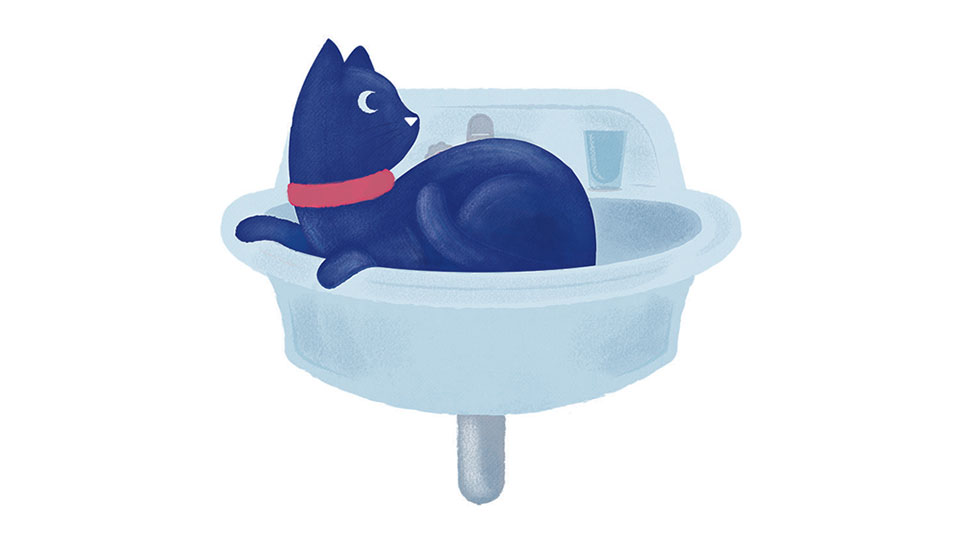 Create a safe haven in a separate room or corner with a water bowl, bedding and a few toys. Teach your child that the cat’s safe haven is off limits.
Create a safe haven in a separate room or corner with a water bowl, bedding and a few toys. Teach your child that the cat’s safe haven is off limits.
Generous children love nothing better than sharing their food under the table, without realising that it could be unhealthy for their pet. Keep an eye out if your cat is sniffing around for titbits or even better, place them in a different room during dinner time.
Older children may want to start getting involved in your pet care routine. Letting them fill up their water or food bowls, or cleaning their toys and bedding, can help children learn a valuable lesson about the constant care and attention pets need to live happy, healthy lives.
For more advice and ideas about socialising your cat around children, speak to your local Medivet practice.

Our Pet Care Advice
At Medivet, we’re committed to providing trustworthy, expert advice that helps you care for your pet. Don't miss our latest advice for keeping your pets happy and healthy.
Search advice

Medivet Healthcare Plan
On average our clients save an average of £225 with the Medivet Healthcare Plan.
Learn more


